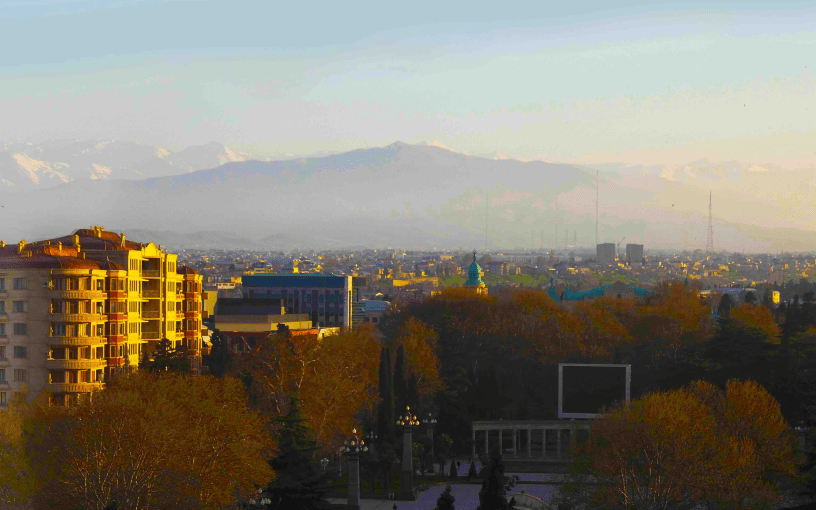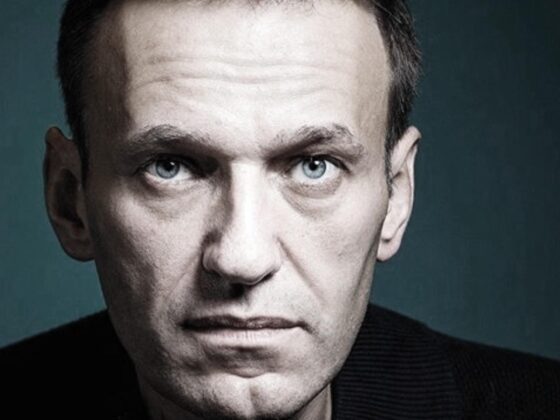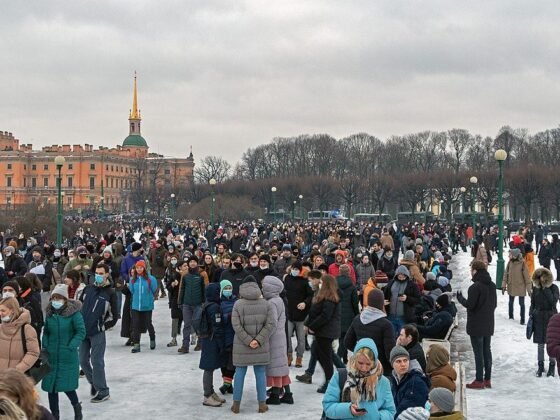(PONARS Eurasia Policy Memo) Global events related to the COVID-19 pandemic have affected all countries in Central Eurasia, with many experiencing signs of recession in late 2020. The forced quarantine regimes and economic downturns challenged or accelerated the downfall of governance systems, revealing long-standing structural problems across the region. The crisis is unique, and some of these countries have never experienced such economic shifts since the collapse of the Soviet Union. However, this time, major global players like China, the EU, and the United States have been struggling with their own crises and can only offer modest assistance.
Azerbaijan, in comparison with other countries in the region, was in good condition at the beginning of 2020. It had recovered from the 2015 economic crisis, held necessary exchange reserves, and the IMF promised economic growth. Azerbaijan was expecting to launch a gas pipeline to Europe and fully utilize the Belt and Road Initiative. The regime held early parliamentary elections in February 2020 that gave a landslide victory to the government party and young pro-government MPs. Then, one month later, Azerbaijan was shut down. The national economy, heavily dependent on oil and gas resources, was reduced, alongside a record drop in oil and gas prices. The government found itself in a difficult situation and has been cost-cutting without new sources of revenue in sight. With few good options, policymakers in Baku may look toward Brussels for cooperative and investment opportunities while pressure will rise domestically as the population seeks more social and economic services. Governmental efforts to reconstruct de-occupied territories in Karabakh will divert significant funds. Azerbaijan would also need the involvement of the United States (and EU) and international financial institutions such as the World Bank and Asian Development Bank for expanding political and economic development.
Institutional Improvements and Implications
Over the past few years, Azerbaijan initiated several structural reforms that significantly improved the quality of some of its institutions. There has been considerable adoption of technology and e-governance in the delivery of public services. Reforms were introduced in the justice and health care systems, replacing old, Soviet-type processes. The main purpose was to optimize the public administration system, cut the cost of the public sector wage bill, and reinvigorate some personnel in key positions—all with the aim of some economic and social liberalization. However, the pandemic stopped these initiatives, and key areas of the economy and social system were drastically affected.
On March 19, 2020, the president signed an executive order to protect public health and strengthen countermeasures against infection. The order focused on macroeconomic stability, employment, and entrepreneurship. The “Action Plan” included large-scale, effective, and efficient measures, accompanied by $2 billion.
When the World Health Organization (WHO) recognized COVID-19 as a pandemic, the government closed all educational institutions—over two million students at various levels stayed home. All primary and secondary schools did not have any online teaching capability, but due to the Azerbaijani government’s strategic partnership with Microsoft, all education institutions were able to use Microsoft Teams for free. (This solved the problem of outreach but did not help improve quality.)
The healthcare system was one of the hardest-hit areas. The year 2020 was supposed to be the year of significant reforms in the sector, with the government planning to liquidate the remnants of the Soviet system and move toward mandatory health insurance. An agency was created for this purpose, TABIB, but plans were halted. The new emergency led to 35 hospitals designated for treating COVID-19 cases. Last fall, the daily rate hit 4,000 cases, leading to serious supply issues nonetheless. And the unprecedented scale of the escalation of the Karabakh conflict added complexity to the response as it burdened the health system. Despite the high capacity of beds (relatively speaking), by November of 2020, the number of infected reached around 90,000 people, which was far above available resources.
Political Implications
Tectonic, paradigmatic shifts happening in international relations did not avoid Azerbaijan. The country is located between three regional superpowers that were hit most by COVID-19—Iran, Turkey, and Russia. Adding fuel to the fire, on September 27, Azerbaijan and Armenia became embroiled in a 44-day-long military conflict that led to the destruction of Armenian and Karabakh-Armenian forces, the de-occupation of Azerbaijani territories adjacent to Karabakh, and Baku in control of about half Karabakh. According to a joint statement by the heads of Russia, Azerbaijan, and Armenia signed on November 9, the two sides should remain in their positions and stop hostilities while Russian peacekeepers locate themselves on the line of contact. Armenia also agreed to de-occupy other territories (Agdam, Kalbajar, and Lachin). The war claimed around 3,000 lives on both sides in the bloodiest clash between the two since 1994.
Azerbaijan was able to regain control of a portion of its occupied territories and start returning displaced people to their lands. Russia has gained a foothold in Azerbaijan, and the Russian military, in the form of peacekeepers, returned to Azerbaijan after 28 years of absence. These Russian peacekeepers represent the real power on the ground controlled by Karabakh-Armenians, while Turkey has become involved in a joint monitoring center together with Russian troops. Such an arrangement indicates that Moscow and Ankara may revive a type of initiative that was explored back in the time of the Russian-Georgian crisis of 2008.
The Russia+Armenia versus Turkey+Azerbaijan scheme has been spelled-out often and has been a way to check the international community’s attitude toward the conflict. Such a platform would allow Russia and Turkey to become guarantors of any future peace treaty between Armenia and Azerbaijan. However, it could be problematic due to Armenian distrust of Turkish plans in the Caucasus as well as sharp Ankara-Moscow controversies in other dimensions and parts of the world. In any case, the Karabakh conflict was solved semi-successfully for Azerbaijan. Many questions remain unanswered, however, especially about the co-existence of Azerbaijani and Armenian communities, the status of the Russian peacekeepers, and the return of Azerbaijani IDPs to Karabakh. The Azerbaijani government will need to use other strategies in dealing now with not only Armenia but also an assertive Russia. Moreover, Baku hopes that Turkish involvement in the conflict would not turn Karabakh into a “South Ossetia” that might receive recognition of independence (by Russia and others) as per a grand conception by Karabakh-Armenians.
Economic Implications
On the economic front, the slump in oil prices along with the spread of pandemic-preventive policies decreased the value of oil exports drastically and doubled the negative impact of COVID-19. Henceforth, to understand the magnitude of the impact of the pandemic on the economy, one needs to consider the country’s structural deficiencies. Low income-generating capacity, spatial inequalities in the access to public services, and weak institutional capacity are consequences of the oil dependence of the Azerbaijani economy over decades. This challenges the fight against the pandemic because the population is in an economically vulnerable situation.
The volatility in the energy market began to impact the economy as early as February 2020. In 2019, roughly 40 percent of GDP was produced by the mining sector, and around 92 percent of exports were mineral products. The non-oil sector of the country is not powerful enough to substitute for the oil one. There has been relative deindustrialization happening since the 1990s and significant expansion of the non-tradable sector. In the absence of a well-functioning manufacturing sector and diversified exports, the negative oil price shocks hit the economy severely, endangering sustainable economic growth (as was the case in 2015). The country’s non-oil sector, which had been the pride of the government for the last five years, became frozen, especially the tourism industry, the hotel business, entertainment, and trade. The imposed quarantine regime from March to December restricted tourism and had ongoing, negative effects on small and medium enterprises and retail and hospitality businesses. Consumer purchasing power drastically dropped.
It was expected that around 35 percent of GDP would be generated from oil while 65 percent would come from the non-oil sector. This goal now appears impossible to reach, and the government would need to increase investments in the domestic market to stimulate business. As mentioned earlier, the government allocated about $2 billion for economic/business/worker livelihood, along with increased public health spending. But all of the highest growth sectors (tourism, retail, food, technology, communications) have been hit badly, which has also cut off important economic spillover benefits into associated sectors.
Needless to say, several barriers have already been in place for foreign capital and private-sector driven growth; institutional and bureaucratic hurdles impact potential. The labor force in Azerbaijan is not qualified enough to produce goods that are competitive in the global market. The limited national market does not allow big investors to open new ventures in the country. A lack of access to an ocean and cheap, sea-based transport routes makes Azerbaijan a rather undesirable destination for foreign direct investment from an export-market perspective. Additional factors that limit foreign investment in the country are the country’s non-accession to the WTO and the absence of a clear plan for joining. Non-accession allows rules and regulations to remain vague, forcing foreign investors to depend on official public decisions. Last but not least, unreliable geopolitics disturb the region, as the country’s three neighbors are under full or partial sanctions.
Beyond Implications
The prevalent challenge for the country is an ambiguous vision of development. Despite the adoption of several “road maps,” the actions of the government over the last three years have not decreased Azerbaijan’s dependence on the carbon economy. As a result, Baku may face serious financial problems in the near future. To fulfill its commitments to expand oil and gas development in the region, including the SOCAR-backed TANAP (Trans-Anatolian) and TAP (Trans-Adriatic) pipeline projects, the government is in dire need of massive investments. The burden of reconstruction of de-occupied Karabakh puts additional pressure on the financial system. The Oil Fund is the only mechanism that can stabilize the financial situation, but it has limits.
What specifically can Azerbaijan expect post-COVID-19 in terms of other projects? The plan of being a transportation hub is still feasible. Considering global security threats such as political turmoil, piracy, and maritime complications, Azerbaijan could still have a role on a trade-transportation corridor involving China, India, ASEAN states, and Central Asia. Beyond favorable geographical conditions, however, it would need some kind of support from the EU and United States. Furthermore, ongoing negotiations between Armenia, Azerbaijan, Turkey, and Russia on “reconnections” between Azerbaijan and Turkey via Armenia, as well as Yerevan and Moscow via Baku, might unlock such passages if they have global potential.
We can expect that long-awaited benefits from the Belt and Road Initiative will be postponed. Even though China may have a fast, post-COVID recovery, its ambitious transcontinental project will probably lag. Beijing will divert resources toward domestic consumption and recovery, resulting in slowing Chinese penetration in the region and a downgrading of most of its projects. The Russian-led North-South transportation project intending to connect Indian with Northern Europe through Iran, Azerbaijan, and Russia will also receive a huge blow due to lower demand and the diversion of financial resources inward. Thus, Azerbaijan may come to rely more on the EU, and its support, in turn, would bring Baku closer to Brussels.
Conclusion
The impact and consequences of COVID-19 are not fully felt by society or the political establishment—thanks so far to Azerbaijan’s national reserves. With limited income-generating abilities, the population will mount pressure on the government to spend more on social and economic programs. The government, however, will find itself cutting costs in public administration. Probably, some economic and administrative changes may occur in order for state structures to further optimize. Some analysts expect massive privatization of state enterprises to occur, which would impact the economic situation (hard to tell which way). From an international standpoint, slow gravitation toward the EU may unfold, especially with Baku’s heavy reliance on cash from gas from European consumers. That, in turn, would force Moscow to use all of its methods to keep Baku in its wider orbit, especially taking into consideration the Karabakh dynamics and presence of Russian peacekeepers in Azerbaijan. Turkey’s role and influence have significantly increased in the country and are expected to grow (to counterbalance Russian pressure). One way or another, the pandemic will significantly change relations between Azerbaijan and the traditional great powers in the region.
Anar Valiyev is Associate Professor at ADA University, Baku, Azerbaijan.
[PDF]Homepage image credit.











